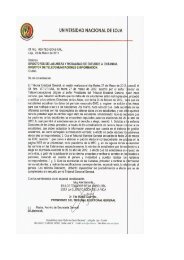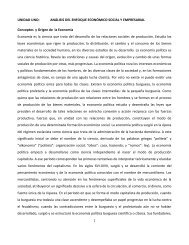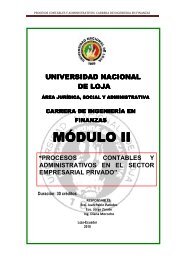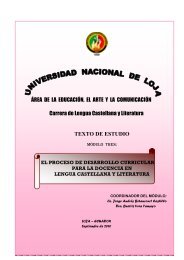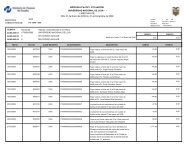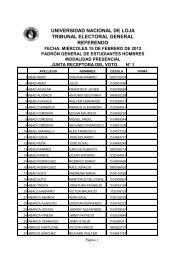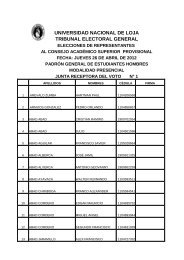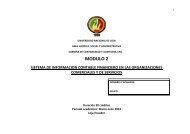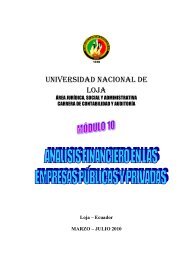module 5 planning of the english language teaching-learning process
module 5 planning of the english language teaching-learning process
module 5 planning of the english language teaching-learning process
You also want an ePaper? Increase the reach of your titles
YUMPU automatically turns print PDFs into web optimized ePapers that Google loves.
UNIVERSIDAD NACIONAL DE LOJA<br />
Área de la Educación el Arte y la Comunicación<br />
English Language Career<br />
You can see that schemes <strong>of</strong> work are less detailed than lesson plans. Like any<br />
individual lesson, a sequence <strong>of</strong> lessons should have a logical and <strong>learning</strong>friendly<br />
progression and a good balance <strong>of</strong> approaches and activities. Like a<br />
lesson plan, a scheme <strong>of</strong> work helps us to identify our aims and make sure we<br />
choose materials and procedures that match those aims.<br />
<br />
Key concepts and <strong>the</strong> <strong>language</strong> <strong>teaching</strong> classroom<br />
• It's a good idea to make lesson plans look as simple as possible, so notes<br />
are better than full sentences, and <strong>the</strong>re's no need to describe every step in<br />
great detail. However, we may want to write down some important things in<br />
a complete form - for example, prompts for drilling, questions to check<br />
learners' understanding, instructions, etc.<br />
• A lesson plan should be clear and easy to read during <strong>the</strong> lesson. Different<br />
colours, boxes, underlining, etc. are useful. It is <strong>of</strong>ten helpful to include<br />
drawings <strong>of</strong> <strong>the</strong> way <strong>the</strong> blackboard (or whiteboard) will look at different<br />
stages.<br />
• Variety is very important both in a sequence <strong>of</strong> lessons and in a single<br />
lesson. We should avoid always doing <strong>the</strong> same kinds <strong>of</strong> things in <strong>the</strong> same<br />
order, e.g. always beginning <strong>the</strong> lesson with a conversation or always<br />
ending with a role-play. There are several different ways <strong>of</strong> introducing<br />
variety into lessons. Here is a list <strong>of</strong> things we can vary:<br />
Pace<br />
quick and fast-moving or slow and reflective<br />
interaction pattern individual, pairs, groups, whole class<br />
Skill productive or receptive<br />
level <strong>of</strong> difficulty<br />
non-demanding or requiring effort and concentration<br />
Content changing from one <strong>language</strong> point to ano<strong>the</strong>r; from one<br />
subject to ano<strong>the</strong>r<br />
Mood light or serious; happy or sad; tense or relaxed<br />
exciting or calming activities 'stirring' (lively and active) or 'settling' (quietening down)<br />
• Learners may well require more frequent revision than <strong>the</strong> coursebook<br />
provides. A scheme <strong>of</strong> work is a good way to make sure that we recycle<br />
<strong>language</strong> (i.e. use it again) and include regular revision activities during a<br />
sequence <strong>of</strong> lessons.<br />
• Coursebook units are <strong>of</strong>ten arranged around a specific topic (such as sport<br />
[Escribir texto] Página 57



